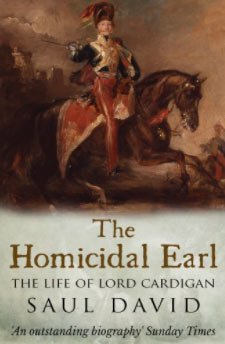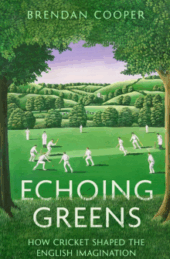The Homicidal Earl: The Life of Lord Cardigan
Of all the cock-ups that provide shade from the bright light of Britain’s military successes, the Charge of the Light Brigade during the Battle of Balaclava, fought in the Crimea on 25th October 1854, is one of the most enduring. In terms of the casualties suffered or the bravery displayed, there are other disasters, including the 1842 Kabul Retreat and the humiliation of Maiwand in 1880, that eclipse what was actually – in the overall scheme of things – quite a small affair.
However, no other event in the history of British military misfortunes is quite so blessed with such an extraordinary cast of misfits as the magnificent but doomed charge of the ‘six hundred’. Indeed, no historical novelist, anxious to avoid suspending reader belief, would dream of combining an inept and one-armed GOC with an impetuous and contemptuous staff galloper, and a pair of warring aristocratic brothers-in-law.
Nonetheless, that is what Fate did by combining the characters, background and behaviour of Lord Raglan, Captain Lewis Nolan, and the Earls of Lucan and Cardigan. This fatal cocktail of ineptitude, arrogance and mutual contempt continues to fascinate historians, not least Saul David, whose The Homicidal Earl remains one of the best reads on the subject in general, and Cardigan in particular.

The Charge of the Light Brigade, by Richard Caton Woodville Jr
While not shying away from the Earl’s legendary faults, which he lays out in detail, Saul David’s is a balanced view of man who, in his day, was both lionised and reviled, and whose posthumous reputation is seriously tainted by slurs promulgated in his lifetime. As Shakespeare has Mark Antony declaim over Julius Caesar’s body in the eponymous play: ‘The evil that men do lives after them; the good is oft interred with their bones.’ So it is with George Brudenell, 7th and last Earl of Cardigan.
As Saul David points out in the closing pages of this excellent account of an extraordinary life, the historian Guy Paget’s view that ‘the kindest thing one can say about [Cardigan] is that he was a very stupid man, who tried to hide his stupidity by a display of arrogance and bluster’, is quite simply wrong. For, as Mr David points out, while Cardigan was dogged by self-inflicted controversy, ‘… no idiot could have come top of his class at Harrow at a time when the school was educating Prime Ministers…; no idiot could have displayed such an increasingly confident performance on the floor of both Houses of Parliament.’
It is worth adding to Mr David’s observations, as it lends colour to Cardigan’s character, that the ‘homicidal Earl’ was a founder member of that most artistic and theatrical of the gentlemen’s clubs of London, the Garrick Club; and, as it gives the lie to the allegation of Cardigan’s cowardice in the face of the Russian guns, that the accusation was refuted in writing by Henry Maxse (later Lieutenant Colonel Sir Henry ‘Fitz’ Maxse).
Maxse had the unique distinction of being the only infantryman to charge with the Light Brigade in his role as one of Cardigan’s ADCs, riding only a few lengths behind his chief and losing part of a foot in the charge. Fourteen years later, in reaction to Alexander Kinglake’s account of the charge, he wrote to his brother (Commodore Frederick Maxse RN) for publication in The Times, an interesting first-hand account of the action. This included refutations of Kinglake’s assertion that Cardigan had pulled up short of the Russian guns and – controversially – that Nolan, whose histrionic verbal instructions had initiated the charge, had never meant the Light Brigade to engage the Russian Battery at the end of the ‘valley of death’.
This is what he wrote: ‘… my belief is that Cardigan’s conduct as regards leading the charge was without the slightest flaw… if he had turned short then I think I might have seen him… Nolan was killed close to me and Kinglake’s account is good – but absurd as to Nolan’s wanting to charge any of the guns but those which he did…’
When the Garrick Club’s records and Maxse’s account are added to that of Saul David’s, a truly rounded and rather less damaging profile of the 7th Earl of Cardigan emerges – but this in no way mitigate what was undoubtedly a military cock-up of quite historic proportions.
Christopher Joll is a historian and author of Spoils of War: The Treasures, Trophies & Trivia of the British Empire.







